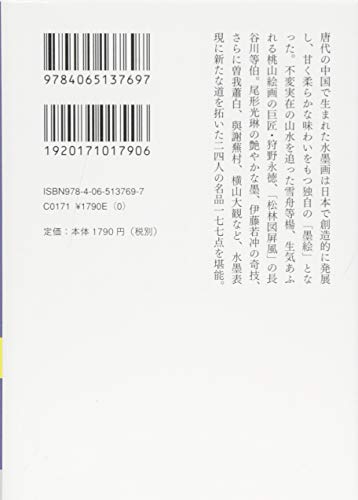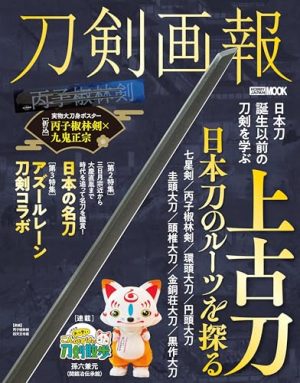Opening Sale! All products are 10% OFF!
The Complete History of Japanese Ink Painting (Kodansha Academic Library 2532)
$15.40
Description
This book introduces the lives and masterpieces of 24 representative Japanese ink painters, tracing the path by which ink painting, which originated in China, took root in Japan and developed creatively. Sesshu Toyo, who pursued the ever-changing reality of landscapes. Kano Eitoku, a master of Momoyama painting who left behind vibrant ink paintings. Hasegawa Tohaku, who created the Pine Forest Screen. Ogata Korin's lustrous ink, Ito Jakuchu's unique and unusual techniques, as well as about 180 masterpieces by masters of "monochrome painting," such as Soga Shohaku, Yosa Buson, Watanabe Kazan, Tomioka Tessai, and Yokoyama Taikan. This book introduces the lives and masterpieces of 24 representative Japanese ink painters, from Sesshu to Yokoyama Taikan, tracing the path by which ink painting, which originated in China, took root in Japan and developed creatively. Ink painting is an innovative painting method that arose in China during the Tang Dynasty, and was not fully introduced to Japan until the Kamakura period. It took many years to digest and develop creatively, but according to the author, "Japanese ink paintings naturally change in appearance and quality from those in China," and "it seems that by tracing the process of Japanization of ink paintings, we can get closer to the characteristics of Japanese culture itself." Sesshu Toyo, who traveled to China during the Muromachi period and pursued the unchanging reality of landscapes. Kano Eitoku, a master of Momoyama painting, is known for his bold and heroic style, but also left behind lively ink paintings such as the flower and bird painting sliding doors at Jukoin Temple. Hasegawa Tohaku, whose Pine Forest Screen has been deemed a "masterpiece of sketches" in recent research. The book features about 180 masterpieces left by masters of "monochrome painting," including the lustrous ink of Ogata Korin, the unique and unusual technique of Ito Jakuchu, and Soga Shohaku, Yosa Buson, Watanabe Kazan, and Tomioka Tessai. A leading researcher in Japanese art history goes beyond the narrow confines of his field to frankly discuss his personal tastes and opinions on artists. [Original: "Sumi-e no Fu – Nihon no Suibukagatachi" (Sumi-e Paintings of Japan), vols. 1 and 2, Pelican Press, 1991 and 1992]
Additional information
| Weight | 290 g |
|---|---|
| Dimensions | 148 × 108 × 31 mm |











